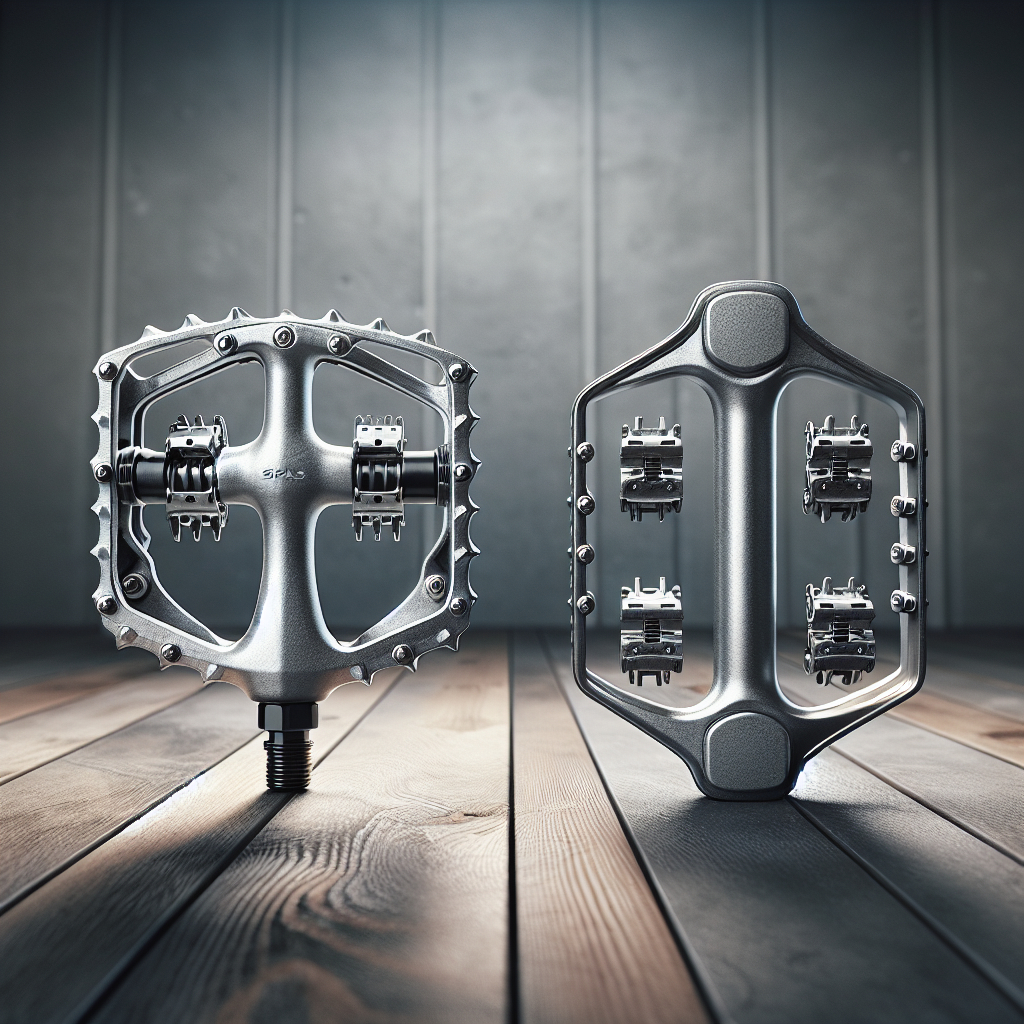
Bike pedals are a crucial component of any bicycle, directly influencing the rider’s performance, comfort, and safety. The debate between clipless and flat pedals has been ongoing among cyclists of all levels, from casual riders to professional athletes. This article delves into the importance of bike pedals and compares the advantages and disadvantages of clipless and flat pedals.
Understanding Bike Pedals
Bike pedals serve as the primary point of contact between the rider and the bicycle, playing a significant role in power transfer, control, and overall riding experience. There are two main types of pedals: clipless and flat. Each type has its own set of features, benefits, and drawbacks, making the choice between them highly dependent on the rider’s preferences, riding style, and specific needs.
Clipless Pedals
Clipless pedals, despite their somewhat misleading name, involve a mechanism that allows the rider to “clip in” their shoes to the pedals using cleats. This system provides a secure connection between the rider’s foot and the pedal, enhancing power transfer and control. Clipless pedals are popular among road cyclists, mountain bikers, and competitive riders.
- Advantages:
- Improved Power Transfer: The secure connection allows for more efficient energy transfer from the rider to the bike, especially during the upstroke of the pedal cycle.
- Enhanced Control: Being clipped in provides better control over the bike, particularly in technical terrains and high-speed descents.
- Reduced Foot Slippage: The risk of the foot slipping off the pedal is minimized, which can be crucial in maintaining balance and stability.
- Disadvantages:
- Learning Curve: New riders may find it challenging to get used to clipping in and out, which can lead to falls and accidents.
- Cost: Clipless pedal systems, including the pedals and compatible shoes, tend to be more expensive than flat pedals.
- Maintenance: The cleats and pedal mechanisms require regular maintenance to ensure smooth operation and longevity.
Flat Pedals
Flat pedals, also known as platform pedals, are the traditional type of pedals that do not require any special shoes or cleats. They offer a large, flat surface for the rider’s foot and are commonly used by casual riders, commuters, and some mountain bikers.
- Advantages:
- Ease of Use: Flat pedals are straightforward and easy to use, making them ideal for beginners and casual riders.
- Versatility: Riders can use any type of footwear, which is convenient for commuting and casual rides.
- Quick Dismount: The ability to quickly remove the foot from the pedal can be beneficial in emergency situations or when navigating technical terrain.
- Disadvantages:
- Less Efficient Power Transfer: Without the secure connection, power transfer is less efficient compared to clipless pedals.
- Foot Slippage: There is a higher risk of the foot slipping off the pedal, especially in wet or muddy conditions.
- Reduced Control: Flat pedals may offer less control in technical terrains and high-speed descents compared to clipless pedals.
Choosing the Right Pedals
The choice between clipless and flat pedals ultimately depends on the rider’s preferences, riding style, and specific needs. Here are some factors to consider when making the decision:
- Riding Style: Road cyclists and competitive riders may benefit more from clipless pedals due to the improved power transfer and control. On the other hand, casual riders and commuters may prefer the simplicity and versatility of flat pedals.
- Experience Level: Beginners may find flat pedals easier to use and less intimidating, while experienced riders may appreciate the performance benefits of clipless pedals.
- Terrain: For technical terrains and mountain biking, clipless pedals can offer better control and stability. However, flat pedals can be advantageous in situations where quick dismounts are necessary.
- Footwear: Consider the type of footwear you prefer to use. Clipless pedals require compatible cycling shoes, while flat pedals allow for any type of footwear.
- Budget: Clipless pedal systems can be more expensive due to the cost of pedals and compatible shoes. Flat pedals are generally more affordable and require no special footwear.
Conclusion
Both clipless and flat pedals have their own unique advantages and disadvantages, making the choice between them highly personal and dependent on various factors. Understanding the differences and considering your specific needs and preferences will help you make an informed decision. Whether you choose clipless or flat pedals, the most important thing is to ensure that your pedals provide a comfortable, safe, and enjoyable riding experience.

